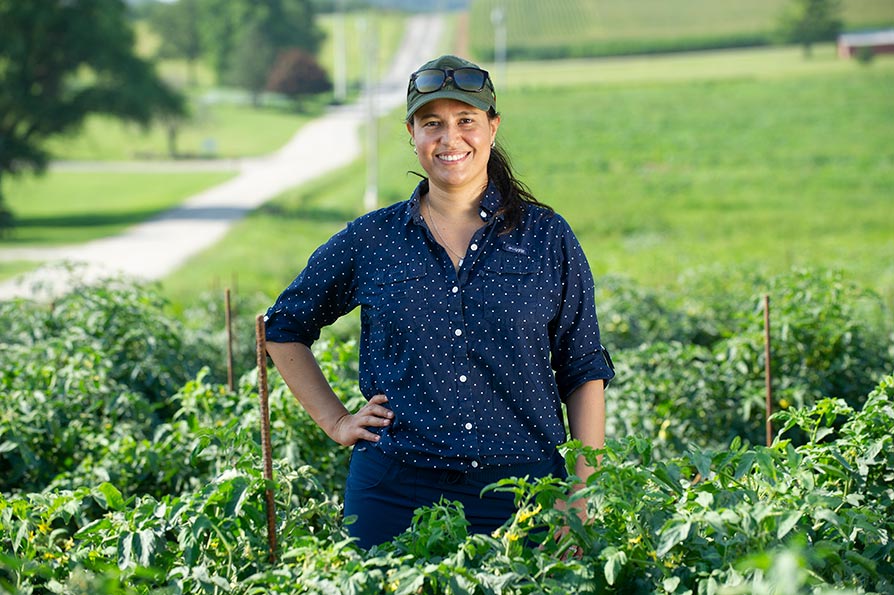The 4 Keys To Nurturing Soil Biology: Protect, House, Feed, and Recruit
The key to long-term farm success depends on soil biology. Soil biology is essential to improve nutrient movement, increase stress adaptation and phytohormone production, and reduce disease risk.
So what ways can you nurture soil biology to reap the benefits? It’s important to explore and understand the four key steps in nurturing healthy soil biological makeup for guaranteed farming success.
1. Protect
Are you protecting soil biology from the sun, wind, and water erosion, and intensive management practices? Are you ‘armoring’ the ground from the sun? Are you minimizing disturbances? Are you considering what inputs affect biology? Plant growth is resilient with minimal disturbance. Farmers are aware of the potential problems associated with overusing synthetic fertilizers, which can create unnecessary costs. Synthetics can cause changes in pH or raise salinity levels, which can negatively impact soil biology. For this reason, it’s important to understand the biological and chemical makeup of specific synthetic fertilizer products to protect the soil.
In addition to lowering the pH, some fertilizers can actually raise it, which can also hurt soil biology in certain environments. Increased salinity is one of the main ways that conventional fertilizers can damage soil biology. Knowing which microbes are helpful and which are harmful can be beneficial for farmers before they begin the growing season. It helps farmers choose the correct agricultural input products to ensure optimum soil health and crop yield.
2. Housing
Are you building a home for the microbes to live in? Microbes thrive in dynamic ecosystems, form networks, and build communities that allow them to nourish a plant-microbe symbiosis. Are you enabling a healthy soil structure? Soil disturbances also affect soil structure, which is crucial for exposing mineral surfaces that act as binding sites for soil carbon. Soil disturbances are bound to happen through general farming practices, but knowing how to restore balance to the soil will help when housing microbes. It’s therefore also vital to understand the factors and external elements that may be affecting soil structure and soil health. Farmers can learn how to create an environment for beneficial microbes to thrive. This entails understanding which dynamics and biological factors influence the concentration and presence of these microbes, thereby creating a home for the microbes to succeed.
3. Feeding
Are you feeding the soil biology and microbes the correct substances throughout the year to keep them alive and functional? Compost, cover crops, and molasses are all examples of food the soil biology needs to ensure they are carrying out critical functions for crops. Soil carbon is a food source for the microbes that convert it into essential nutrients for plants. When these microbes don’t have enough access to this food, they can’t convert nutrients into forms that plants can use, which lowers plant health. Good concentrations of nutrients in the soil, which are facilitated by the presence of the right microbes, will help crops and plants get the food they need to thrive. Soil microbes play an essential role in decomposing plant residues and recycling nutrients for plants and are, therefore, directly associated with soil carbon concentrations. Soil organic matter, which includes all carbon-based materials (including living organisms), is essential for healthy agricultural systems. If the overall soil system is healthy and functional, it will improve crop yield and plant growth.
4. Recruit
Can you recruit new biology that can help with specific functions and help with some of the soil needs, like utilizing biological inputs? You can recruit new biology early on in the season to set yourself up for success and improve soil microbe functions.
A biological soil test that is done early in the season can tell you what microbes are present and what functionality the microbes have. Farmers taking action early in the season will ensure high yields and reduce farm costs.
Farmers can use this data to determine what needs to be reduced or added to the soil to ensure it is as healthy and nutrient-rich as possible for crop yield and quality success. When recruiting new biology and microbes into the soil, farmers need to be careful not to introduce pathogens or organisms that might have a potentially harmful effect on the soil’s health.
Ensuring Healthy Soil Biology
As a farmer, it’s essential to understand what your soil needs to ensure it’s as healthy as possible for the crop-growing season. Many agricultural inputs are made on a generic basis. However, every farm is different and needs to be treated as a separate entity entirely. Understanding what needs to be protected and housed and fed to the soil and introduced are the first steps in ensuring a season’s success.










